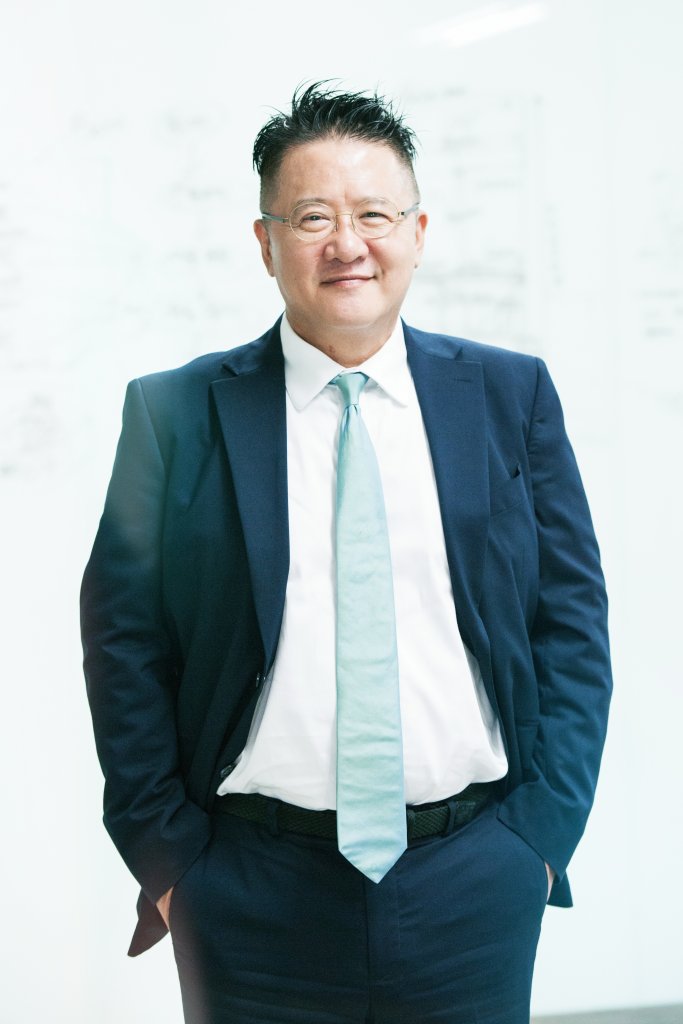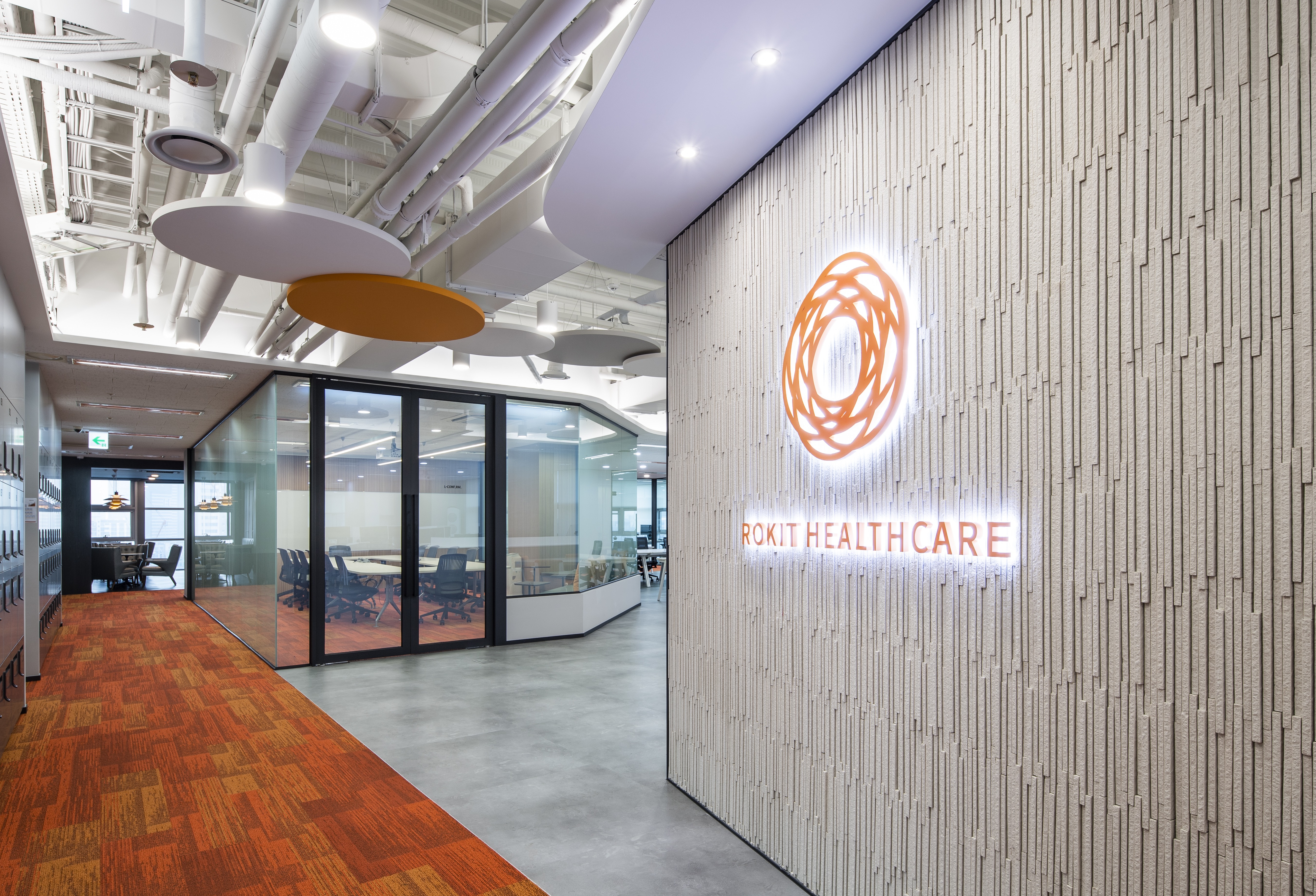
When Seok-Hwan You founded Rokit Healthcare the company was one of the first worldwide to be able to 3D print PEEK and other high-performance materials. It quickly grew to dominate its local Korean medical and bioprinting market before reaching overseas for expansion. Recently the firm pivoted from just selling 3D printers and materials towards offering integrated solutions. With a renewed focus on regenerative healthcare, the firm is offering complete solutions for bioprinting. Rokit Healthcare now offers bioinks, the firm has a tissue bank, a 3D printing service and training. Rokit Healthcare is now furthering its goal to lead in bioprinting. I was very impressed by Rokit’s facilities and staff when I visited the firm. We interviewed Rokit Healthcare CEO Seok-Hwan You to find out more about his vision on bioprinting and goals for the pioneering company.
What is Rokit Healthcare?
ROKIT Healthcare strives to improve the quality of life and health around the world by addressing the problem of aging and age-related diseases with total, healthcare solutions. 3D biofabrication and the development of patient-specific tissue and organ regeneration therapies are our core capabilities. However, we are also involved in the provision of other healthcare programs, such as genetic testing of individuals, customized insurance services, and global medical tours.
Why did you pivot towards regenerative medicine and away from bioprinting?
We have not pivoted “away from bioprinting” per se. It is very much our core scientific technology; it sets the base for personalized therapy solutions we expect to introduce to global hospitals, from patient-specific skin and cartilage regeneration to heart and retina patch biofabrication solutions. However, as previously mentioned, we believe bioprinting must converge with other preventive medicine and diagnostic technologies, digitalization and healthcare management strategies to be truly effective at the level of patient outcomes.
So, we seek to address regenerative medicine and healthcare from a much wider vantage point, with bioprinting as an important but not the only one area of our endeavors.
Why should 3D Print partner with you?
What sets ROKIT Healthcare apart is that we offer services and insights from a total regenerative medicine solution provider’s perspective rather than a 3D bioprinting device, biomaterial, or 3D printed tissue products company.
As much as 3D bioprinting sits at the center of an exponential tech convergence, a group that can approach the field from various vantage points of health business and economics is likely to be an ideal partner for 3D Print in reaching out to its diverse professional client bases. ROKIT Healthcare is such a group.
What customers are you looking for?
Currently, our priority lies in developing customer bases for our 3D bioprinter and biomaterial platforms. Our focus customers include research groups from universities, government institutes, hospital labs, and pharmaceutical companies. The fields of application range from tissue engineering and regenerative medicine to micro-tissue development for pharmaceutical testing as an alternative to animal experiments. Soon, however, as we introduce 3D bioprinting-based therapy solutions like skin and cartilage regeneration platforms, we expect our client bases to expand beyond life sciences research to doctors and medical device companies.

What is your company culture like?
Like all great companies, we value integrity, excellence, respect, collaboration, and autonomy. But the four key values we as a company live by are: 1) ownership: we encourage strong ownership and autonomous decision-making by employees; 2) detail-orientation: we approach every task with a practice of thoroughly and concisely reviewing product or service execution; 3) no surrender: we do not give up easily and find value in even the littlest 1% possibility against 99% objections; 4) back to the basics: we stick to simplicity and adherence to fundamental principles and values of integrity, discipline, and respect.
At the convergence of these four values stands one key action principle: “Keep Blitz and Simple”. We, ROKIT Healthcare, are committed to maximizing employee freedom to fight the “python of process”. We give unusual amounts of freedom and information to all employees, sharing documents and business plans internally broadly and systematically, because we believe that highly-informed and autonomous employees are capable of good judgment to lead the company to success.
What do you hope to achieve over the next five years?
We envision integrating the 3D bioprinter and its applications into the traditional healthcare services, making the idea of bioprinting as a medical device a reality. Already we have begun the journey this month, with the start of our first clinical study of bioprinting-based skin regeneration for diabetic foot ulcer patients in India (August, 2019).
Why is it important to bioprint inside the operating theatre?
Bioprinting right by the bedside inside the operating theatre means minimized time, risks, and costs in the transfer of patient cells to the bioprinter and in the transfer of printed tissues back to the patient. It is a new kind of point-of-care personalized healthcare solution that maximizes the benefits of autologous regenerative medicine technologies.
What bioprinting materials are you excited about?
Nowadays, there are many kinds of bioinks in the market, including synthetic and natural polymers. But, they are not all applicable to the human body. We say “Aging is a Disease; Nature is the Best Therapy”. In that sense, we are excited about the whole extracellular matrix (ECM)-based bioinks that are derived from the ‘Human Body’. We believe the ECM is Nature.
What new developments are very interesting to you?
When it comes to traditional diagnostics of cancer, regardless of its kinds, doctors have been treating their patients only with bulk RNA-based analysis. But, as many of us realize today in the cancer research field, we know that the reason cancer is so hard to treat is that it is an extremely heterogeneous population of cells. We understand that each cell is its own universe. Understanding each of these universes is only possible by single-cell RNA analysis, and this will be key to taking any step closer to finding effective treatments for cancer. The scRNA technology may have much room to mature, but we’re working on it excited about its potential.

What products do you have?
We supply INVIVO, our signature 3D bioprinter. Plus, we supply 3D printers for material engineering and advanced prototyping in biomedical fields with materials like PEEK and ULTEM.
Do you have high hopes for PEEK? PCL? Other materials?
We have been paying a great deal of attention to broadening applications for medical-grade PCL and PEEK, especially in the applications of bone regenerative matrix and customized pill fabrication. However, the greatest focus of our energy lies not on synthetic plastics, but on natural ingredients like human ECM as a supportive materials for 3D printed living cells.
What are the challenges in bioprinting?
The biggest challenge that all industrial players of 3D bioprinting face is closing the gap between the technology we supply and the actual needs of our customers in the bioprinting research. A key part of these needs is to understand that bio 3D printing, unlike industrial 3D printing, is not only about manufacturing structures with architectural stability but about promoting cell ingrowth and considering the impact of manufacture on cell viability. Based on a constant probe into such understanding, we are building a base for developing next-generation bioprinting technologies and biomaterial applications.
Subscribe to Our Email Newsletter
Stay up-to-date on all the latest news from the 3D printing industry and receive information and offers from third party vendors.
Print Services
Upload your 3D Models and get them printed quickly and efficiently.
You May Also Like
Heating Up: 3D Systems’ Scott Green Discusses 3D Printing’s Potential in the Data Center Industry
The relentless rise of NVIDIA, the steadily increasing pledges of major private and public investments in national infrastructure projects around the world, and the general cultural obsession with AI have...
Formlabs Teams Up with DMG MORI in Japan
In late June, Nick Graham, Chief Revenue Officer at Formlabs, announced on LinkedIn that the company had partnered with DMG MORI, one of the world’s leading machine tool companies, to...
EOS in India: AM’s Rising Star
EOS is doubling down on India. With a growing base of aerospace startups, new government policies, and a massive engineering workforce, India is quickly becoming one of the most important...
3D Printing News Briefs, June 25, 2025: R&D Materials, 3D Printed Veneers, & More
In today’s 3D Printing News Briefs, 3DXTECH has launched a program that gives customers early access to experimental materials, and the first Lithoz CeraFab Multi 2M30 in the Czech Republic...



































